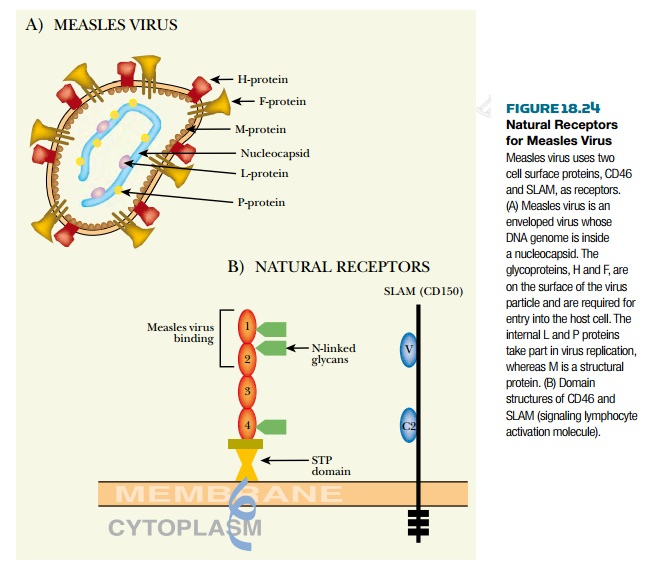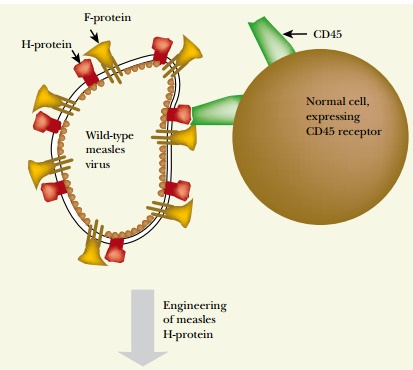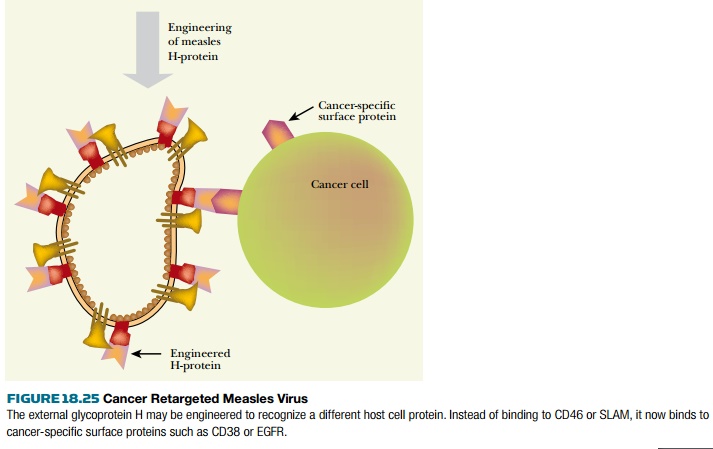Chapter: Biotechnology Applying the Genetic Revolution: Molecular Biology of Cancer
Engineered Cancer Killing Viruses
ENGINEERED
CANCER-KILLING VIRUSES
Lytic viruses infect and kill their
target cells (as opposed to integrating or lying latent). If lytic viruses
happen to infect cancer cells, then they kill these, too. If such viruses could
be made specific for cancer cells, they could provide an effective therapy against
cancer.
Several viruses are being considered as
the basis for engineered oncolytic viruses . At least for now, measles seems
most convenient in many ways. Most people in advanced nations are already
immunized against measles, providing a level of protection against nonspecific
tissue infection and other problems. Indeed, certain lineages of measles virus
have inherent strong antitumor activity. However, they are not cancer specific
and infect other cell types also. To make them cancer specific, it is necessary
to change their receptor specificity. The natural receptors for measles are the
human cell surface proteins CD46 and SLAM (signaling lymphocyte activation
molecule; CD150) which are recognized by the H-protein of measles virus ( Fig.
18.24 ).

Unlike many other virus families, the
paramyxoviruses, which include measles, use two separate virus proteins for
recognizing the host cell (protein H) and entering the host cell (protein F).
Consequently, it is possible to radically modify the recognition protein, H,
without crippling virus entry and infection. Recently, measles viruses with a
range of engineered H-proteins have been made. The modified H-proteins have
mutations that prevent binding to CD46 or SLAM plus an extra C-terminal domain
that recognizes other host cell surface proteins. The new recognition domain
was generated as a single-chain antibody Fv fragment or scFv.


Retargeted measles viruses have been designed to bind to CD38 or EGFR (epidermal growth factor receptor), proteins often expressed at high levels by cancer cells ( Fig. 18.25 ). The new viruses were specific for cultured cancer cells with CD38 or EGFR on the cell surface. Better yet, when mice with implanted human tumors displaying CD38 or EGFR proteins were inoculated with the retargeted viruses, the tumors were efficiently destroyed. It is hoped that this approach will eventually work on human cancer patients.
Related Topics